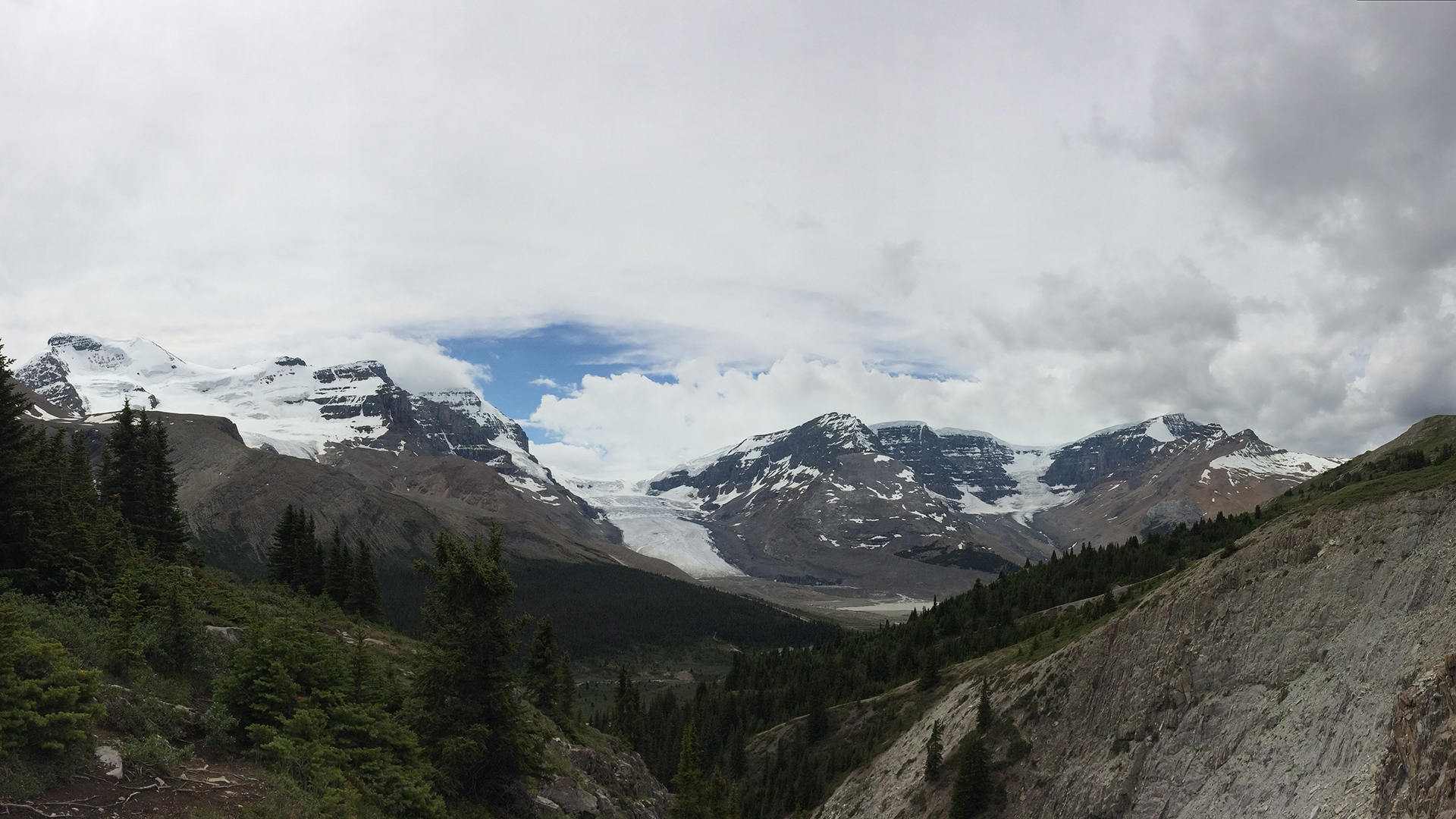Massive ice wall may have blocked passage for first Americans
The icy obstruction may have measured thousands of feet tall.

An icy barrier up to 300 stories high — taller than any building on Earth — may have prevented the first people from entering the New World over the land bridge that once connected Asia with the Americas, a new study has found.
These findings suggest that the first people in the Americas instead arrived via boats along the Pacific coast, researchers said.
There are two main hypotheses as to how people first migrated to North America. The older idea suggested that people made this journey when Beringia — the landmass that once connected Asia with North America, now divided by the Bering Strait — was relatively free of ice. The more recent notion suggested that travelers made their way on watercraft along the Pacific coasts of Asia, Beringia and North America.
A major factor influencing the way in which the first Americans arrived were giant ice sheets that once blanketed North America. Previous research suggested that an ice-free corridor between the margins of these ice sheets may have enabled travel from Beringia down to the Great Plains.
Based on stone tools dating back as much as 13,400 years, archaeologists had long suggested that people from the prehistoric culture known as the Clovis were the first to migrate from Asia to the Americas. Prior work regarding the age of the ice-free corridor suggested it might have served as the migration route for Clovis people.
However, scientists have recently unearthed a great deal of evidence of a pre-Clovis presence in North America. For example, in 2021, 60 ancient footprints in New Mexico suggested humans were there about 23,000 years ago, and in 2020, archaeologists discovered stone artifacts in central Mexico that were at least 26,500 years old.
Related: In photos: The Clovis culture & stone tools
Sign up for the Live Science daily newsletter now
Get the world’s most fascinating discoveries delivered straight to your inbox.
Recent estimates suggested the ice-free corridor did not open until about 14,000 to 15,000 years ago, which would mean that the earliest Americans may have relied on a coastal route instead of an overland one. Still, a great deal of uncertainty remained when it came to the age of the ice-free corridor.
To help solve this mystery, researchers sought to pinpoint when the ice-free corridor opened. They investigated 64 geological samples taken from six locations spanning 745 miles (1,200 kilometers) along the zone where the ice-free corridor was thought to have existed.
The scientists examined boulders that glaciers once carried far from their original homes, much as rivers might wash pebbles down riverbeds over time. They analyzed how long these rocks were exposed on Earth's surface — and thus how long they sat on ice-free ground — by looking at levels of radioactive elements that generated when the rocks were bombarded by high-energy rays from space.
The new findings suggest that the ice-free corridor did not fully open until about 13,800 years ago, and the ice sheets "may have been 1,500 to 3,000 feet (455 to 910 m) high in the area where they covered the ice-free corridor," study lead author Jorie Clark, a geologist and archaeologist at Oregon State University, told Live Science. By comparison, the tallest building in the world, the Burj Khalifa in Dubai, stands about 2,722 feet (829.8 m) high.
"This is a very nicely executed study which tackles a long-standing question," Matthew Bennett, a researcher who studies trace fossils at Bournemouth University in England and who did not take part in this work, told Live Science. "The results are interesting and help add to our understanding of this potential migration route. The authors are to be commended on a great bit of science."
All in all, "we now have robust evidence that the ice-free corridor was not open and available for the first peopling of the Americas," Clark said. Still, "there is still a lot to learn about whether they actually did come down the coastal route, and if so, how did they travel. We need to find archaeological sites from the area."
After the first wave of migration and once the ice-free corridor opened, other migration waves may have taken that more direct route, Clark noted. "But again, we need to find archaeological sites in the ice-free corridor to evaluate when they came down."
John Hoffecker, a paleoanthropologist at the University of Colorado at Boulder who did not participate in this study, pointed out that the earliest signs of people in the Americas may reveal that humans were present there when both coastal and interior routes to North America were blocked by ice. If true, "the simplest explanation is that they followed an interior route through the wide ice-free corridor that was present before 30,000 years ago," he told Live Science.
The scientists detailed their findings online March 21 in the journal Proceedings of the National Academy of Sciences.
Originally published on Live Science.










